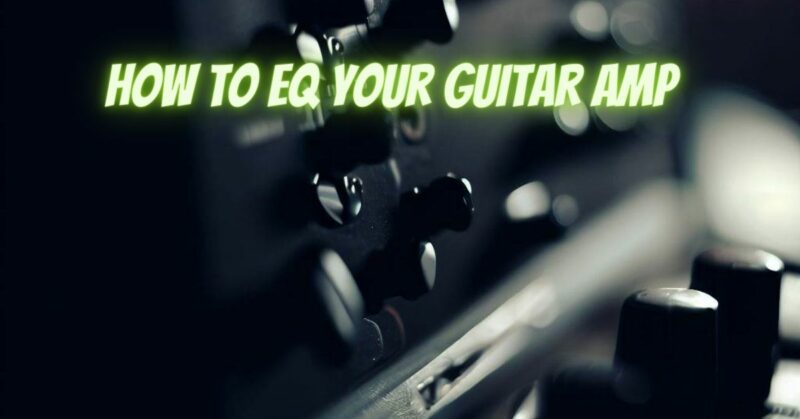Equalization, or EQ, is a powerful tool that allows guitarists to shape and refine the sound of their guitar amplifier. By adjusting the EQ controls on your amp, you can tailor the tonal characteristics to achieve the desired sound for your playing style and musical genre. In this article, we will guide you through the process of EQing your guitar amp to help you unlock the full potential of your tone.
- Understand the EQ Controls: Familiarize yourself with the EQ controls on your guitar amp. Most amps have at least three primary controls: bass, midrange, and treble. Each control affects a specific frequency range. The bass control emphasizes or cuts frequencies in the lower range, the midrange control focuses on the mid-frequency spectrum, and the treble control adjusts the higher frequencies.
- Start with a Neutral Setting: Begin by setting all the EQ controls to the midpoint or 12 o’clock position. This neutral starting point ensures that you have a balanced foundation to work with before making adjustments.
- Experiment with Bass Control: Play your guitar and listen to the overall balance of your sound. If your tone lacks warmth or feels muddy, consider increasing the bass control slightly. If the sound is too boomy or lacks clarity, decrease the bass control. Make small adjustments and listen carefully to find the sweet spot that enhances the low-end response without overpowering the rest of the frequencies.
- Shape the Midrange: The midrange control has a significant impact on the overall character and presence of your tone. Experiment with increasing or decreasing the midrange control to achieve the desired amount of bite, definition, and clarity. Boosting the midrange can help your guitar cut through the mix, while reducing it can create a smoother and more rounded sound.
- Tweak the Treble: The treble control adds brightness and sparkle to your tone. Increase the treble control for a more cutting and articulate sound, ideal for genres like rock or funk. If your tone sounds too harsh or piercing, consider reducing the treble control to smooth out the high frequencies. Strive for a balanced treble response that complements the overall tone of your guitar and playing style.
- Consider Presence or Contour Controls: Some guitar amps offer additional controls like presence or contour, which further shape the tone. The presence control affects the upper harmonics and can add shimmer and clarity. The contour control adjusts the overall shape of the EQ curve, allowing for more radical tone sculpting. Experiment with these controls to fine-tune your sound, but be mindful not to overdo it and lose the natural balance.
- Adapt to Your Environment: Keep in mind that the ideal EQ settings can vary depending on the venue, playing situation, and other equipment in your setup. Adjustments that work well in a bedroom or practice space might need tweaking for live performances or recording. Take the time to familiarize yourself with your amp’s EQ controls and adjust them accordingly to suit different playing environments.
Conclusion:
Mastering the art of EQing your guitar amp is a journey that involves experimentation, careful listening, and understanding your desired sound. Start with a neutral setting, and gradually make adjustments to the bass, midrange, and treble controls to achieve the tonal balance that complements your playing style and musical genre. Don’t be afraid to experiment and trust your ears. With practice and experience, you will develop a deeper understanding of how to shape your guitar amp’s EQ to create your signature sound.

